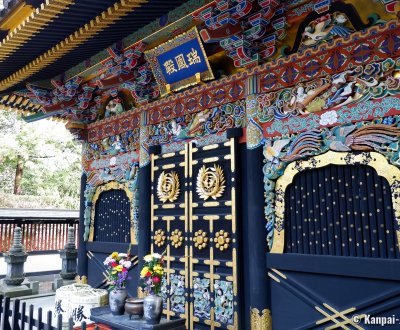Zuihoden
Date Masamune’s Golden Mausoleum
Zuihoden is Date Masamune’s mausoleum, located amidst a relaxing old cedar trees forest at the top of a small hill in Sendai, the capital of Miyagi Prefecture. The historical site encompasses several lavishly decorated pavilions and many lanterns, as well as the grave of his descendants.
As the eternal resting place of daimyo Date Masamune (1567 - 1636), the Zuihoden Mausoleum offers a complex and colorful ornamentation, to the image of his owner who was one of the most influential feudal lords of the Edo period (1603 – 1868). He founded Sendai, the large city of northern Japan and was nicknamed the "One-Eyed Dragon" for his strong temperament and having lost one eye to disease at a young age.
Climbing in a preserved forest
Easily accessible by city bus from the JR station, the funerary site extends on the woody heights of Keigamine Park. The ascension starts by a shaded gentle hillside, then a long stone stairway dating to the complex’s construction in 1637. Huge cedar trees of about 380 years old create an enchanting natural cocoon. Peace and serenity prevail in this place dedicated to the souls of the deceased.
On the way up, the path becomes a fork, opening towards 2 directions:
- The left stairway is the first visitors should climb, as it leads to the Zuihoden Pavilion, at the remotest in the forest;
- The right stairway is actually the way back and connects to the other graves in the compound.
From this point on, one must pay an admission fee to enter the historical precincts; it is therefore important to follow the visit course as it is indicated on site.
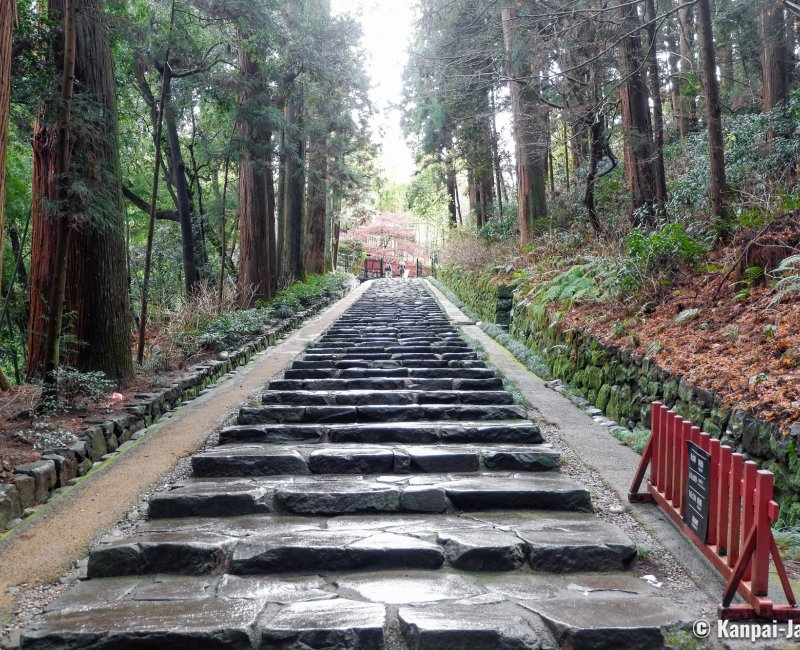
Graveyard of the 3 first lords of Sendai
The sacred enclosure is laid out like a shrine and the classical Shinto pavilions are identifiable, such as the temizuya for purifying ablutions. Then, the path proceeds to the resting places of the 3 daimyo lords of the Date clan, starting by the most important, after passing through the Nehanmon gate, sculpted from a century-old cedar tree from Aomori area.
Masamune’s grave
Zuihoden Mausoleum is home to the grave of Date Masamune, the first lord of the Sendai domain. While of a small size, the pavilion displays a rich combination of black and gold, bright colors in the Momoyama architectural style and is entirely covered of ornamental sculptures. It certainly reminds of the lavish decoration of Nikko’s Toshogu, the grandiose mausoleum of Ieyasu Tokugawa.
The mausoleum was destroyed by US aerial raids in 1945, the current construction was identically rebuilt in 1979, and renovated in 2001. It has been enlisted a National Treasure of Japan since 1931. The adjoining museum documents the archaeological works performed on the historical site.
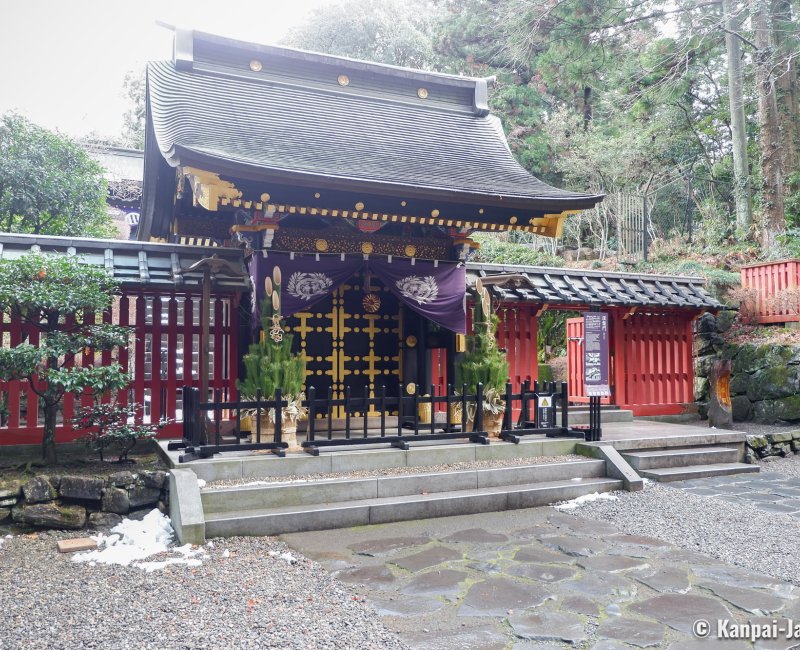
Kansenden and Zennoden Mausoleums
After a moment of recollection and contemplation, walk back and take a small alley bordered by trees to find the 2 other mausoleums of the grounds.
Kansenden is the grave of the second daimyo Date Tadamune (1599 – 1658), the current pavilion dating to 1985 and it benefited from a good renovation in 2007. Tadamune was Masamune’s son and largely contributed to Sendai’s agricultural and economical development in his time.
Zennoden is dedicated to the third lord of Sendai, Date Tsunamune (1640 – 1711), and its buildings were refurbished at the same dates at the neighboring Kansenden. Tsunamune acceded to the throne at 19 years old, but the Tokugawa shogunate forced him to resign after only 2 years. He was known for his strong artistic sense and enjoyed his long forced retirement to get fully involved in his times’ arts, such as calligraphy, Maki-e lacquer-ware or Sumi-e black ink wash painting.
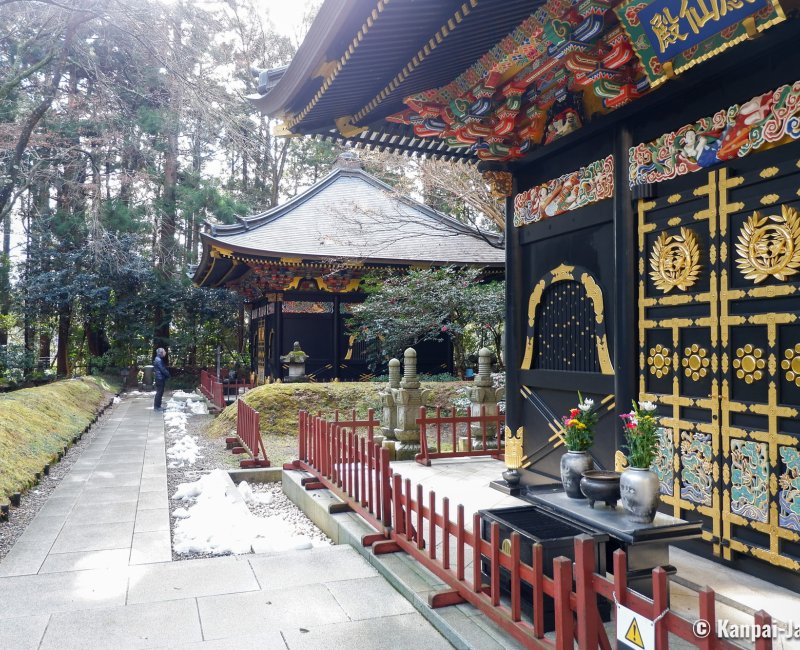
Myounkaibyo and Okosamagobyo Cemeteries
The visit of the Zuihoden ends with the 2 cemeteries laden with dozens of stone lanterns 🏮 covered in moss. At Myounkaibyo, you will find the most official tombs such as those of the ninth lord of the domain, Date Chikamune (1796 – 1809), and the eleventh daimyo Date Nariyoshi (1798 – 1828). Other, less prominent members of the Date clan are also buried here.
Okosamagobyo is the last funeral space to explore. Slightly off-center, it is reachable by a narrow forest path that goes behind the Kansenden, or by an access next to the fork of the 2 main stairways.
It also shelters the grave of the fifth lord Date Yoshimura (1680 – 1752), and of the children of the Date clan. Separated from the rest of the buildings, its disconcerting atmosphere in the darkness and the green of the forest brings out a mystical character.
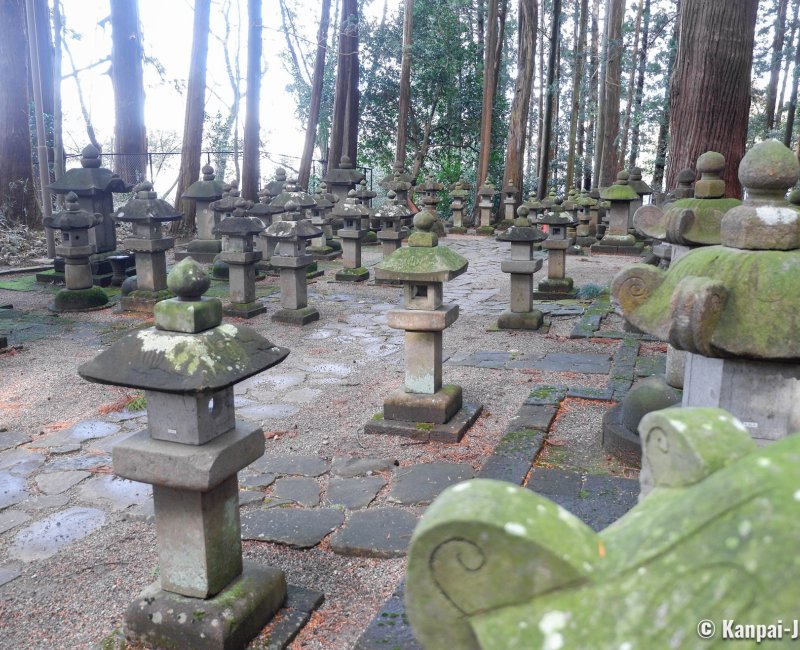
Date Masamune and his descendants’ mausoleum are a must-see when discovering Sendai and the city’s history, very popular with the Japanese people. It is also the occasion to enjoy a moment in harmony with nature such as the Date clan knew it several centuries ago.
Nearby, the Zuiho-ji Buddhist temple completes the excursion, downwards along the road from the bus stop.

